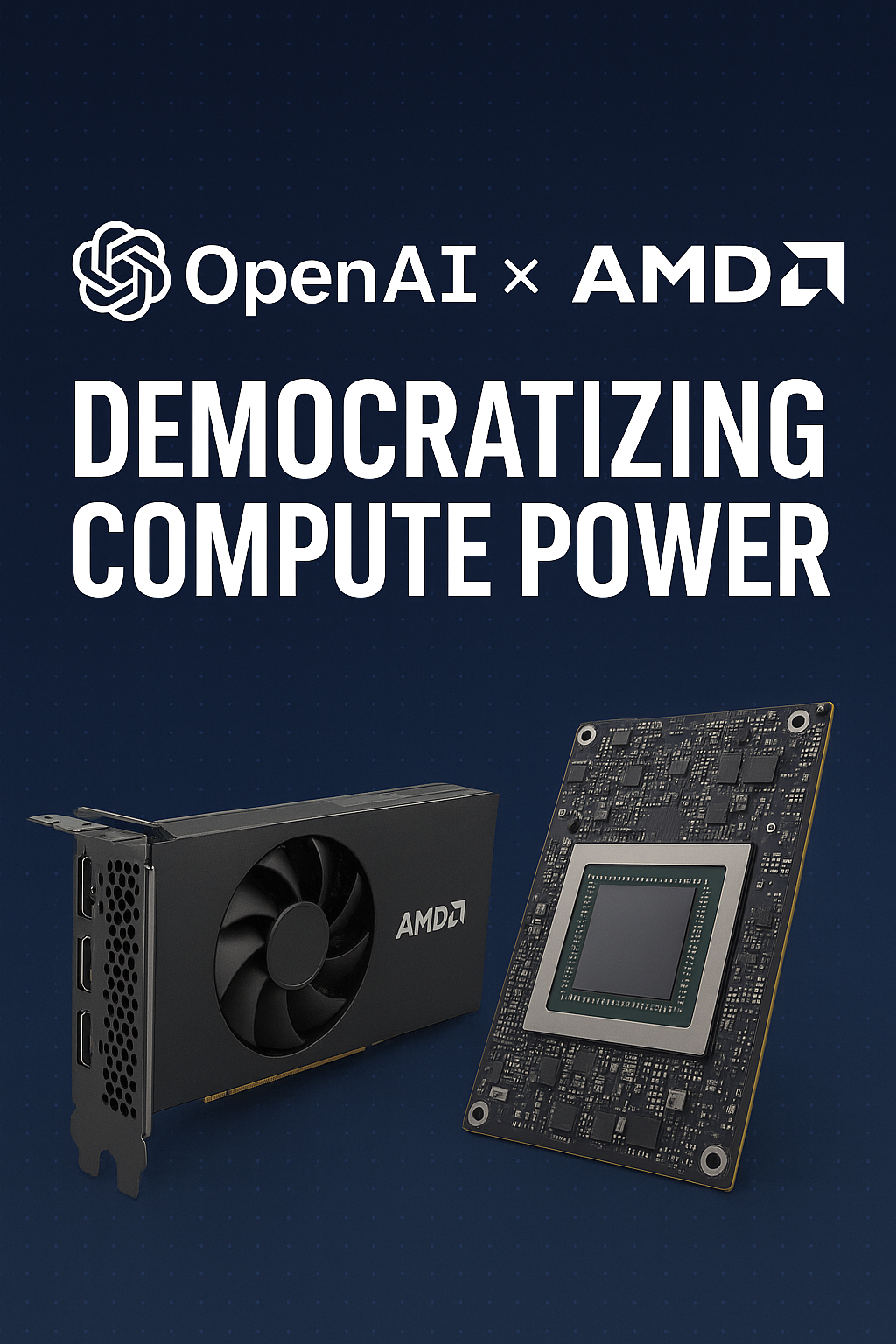Big news in the AI + hardware world: OpenAI and AMD have just announced a strategic multi-year partnership under which OpenAI will deploy up to 6 gigawatts of AMD GPUs, starting with the upcoming Instinct MI450 series in the second half of 2026.
Here’s why this matters — especially if you’re an AI developer or tech leader:
🔍 What’s really going on
The deal gives OpenAI diversified access to high-performance compute beyond its heavy reliance on Nvidia, helping reduce single-vendor risk.
AMD, in return, grants OpenAI a warrant to buy up to 160 million shares (around 10% of AMD) tied to deployment milestones.
The collaboration involves optimizing hardware + software ecosystems together — meaning OpenAI can help AMD tailor future chips better for real-world AI workloads.
💡 What this could mean for making GPUs more affordable (and accessible)
- Economies of scale & volume deals: Massive orders like this can drive down per-unit costs (manufacturing, supply chain, logistics). As AMD scales production for AI use cases, the costs of AI-capable GPUs may drop more broadly.
- More competition in the ecosystem: Nvidia has long been the dominant name in AI GPUs. A stronger AMD push means more choice, which tends to drive innovation and pricing pressure.
- Better alignment between hardware and AI workloads: When chipmakers and AI model developers co-design, inefficiencies go down, lower “wasted cost” and more compute per dollar for devs.
- Easier access for smaller players & startups: As pricing normalizes, mid-tier and even edge AI players may no longer feel locked out of heavier compute simply because the entry cost was too steep.
- Spillover benefits to cloud, edge, and academia: Lower hardware costs will eventually cascade into cloud providers, educational institutions, and AI labs, making advanced compute more democratized.
⚠️ Caveats & things to watch
This is a long-lead commitment: the first deployment is slated for 2026.
- Success depends heavily on AMD’s ability to deliver at scale, maintain yield, and meet performance expectations.
- The GPU supply chain remains subject to global risks (e.g. supply bottlenecks, geopolitical constraints, fabrication capacity).
- Even if hardware costs decline, software, memory, interconnect, energy, and cooling costs will still be nontrivial in large-scale AI systems.
In short: this deal is a bold bet — one with the potential to reshape the economics of large-scale AI development. If AMD plays this right, we could see a future where high-performance compute is no longer confined to deep-pocketed players.

